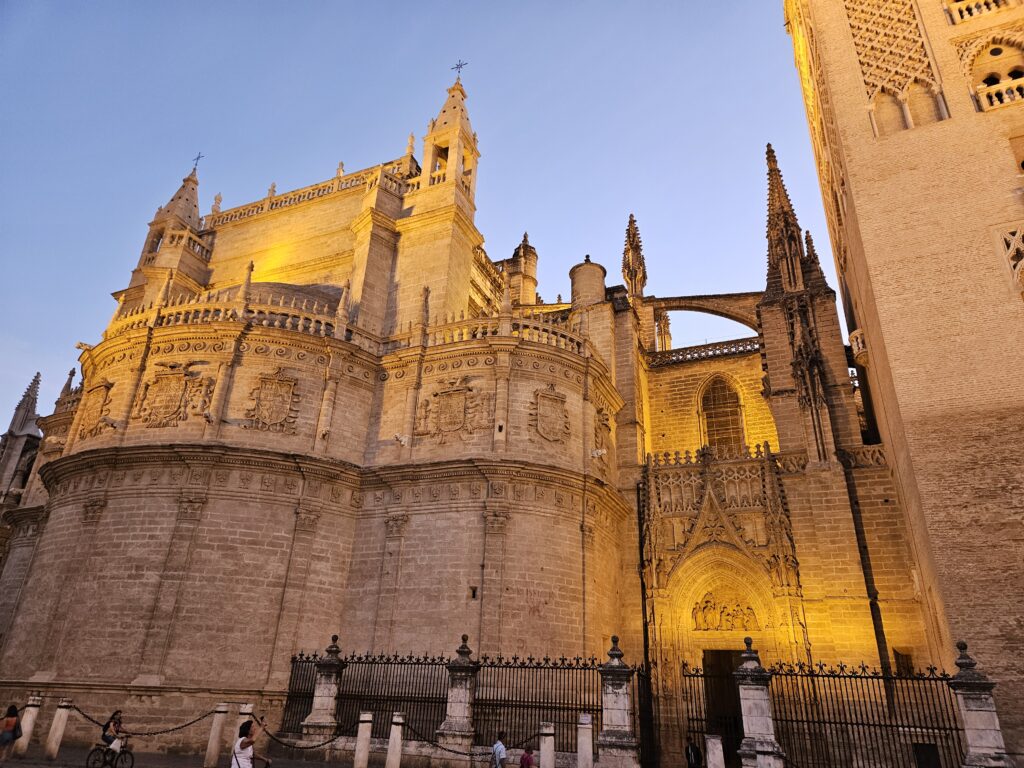
From Granada, we took an early morning Alsa bus to Seville, the bus ride was comfortable and just 3 hours. The train would have taken 2.5 hours and some required a change in Cordoba, train tickets were more expensive so we opted for the bus. The bus was fully sold out, so believe that booking it early is a must. More details another time.
Seville or Sevilla, the quintessential Andalucian city totally lives up to its hype. It is beautiful, historic, and feels Spanish in its every essence. Flamenco is everywhere and Andalusian culture is tangible. While Madrid and Barcelona can feel big and overwhelming, Sevilla totally charms the visitor with its unique ambiance. Sevilla’s Royal Alcazar, Cathedral and the General Archive of the Indies are all UNESCO world heritage sites.
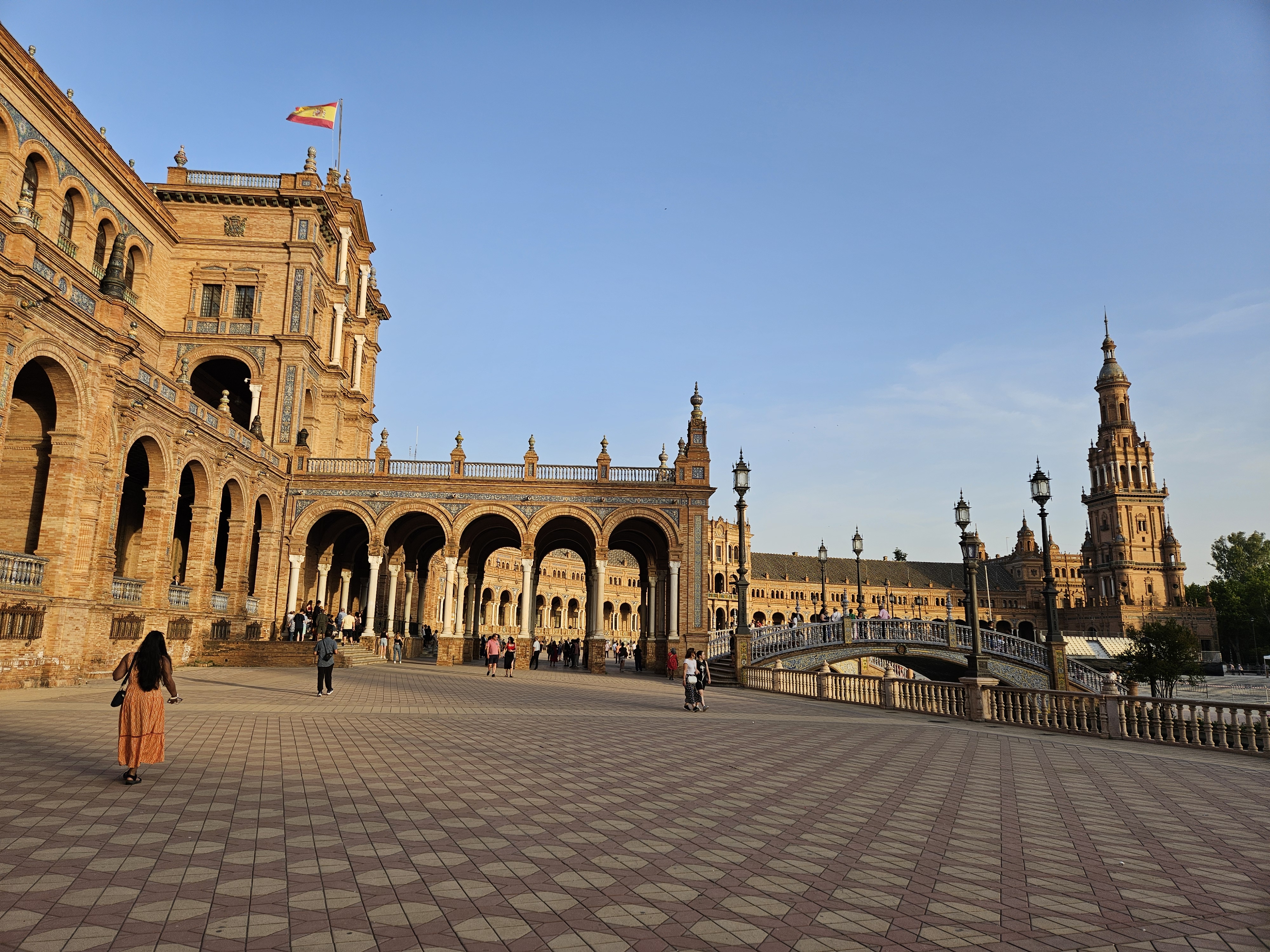
Sevilla’s top attractions we enjoyed: –
Seville Cathedral and Giralda Bell Tower:
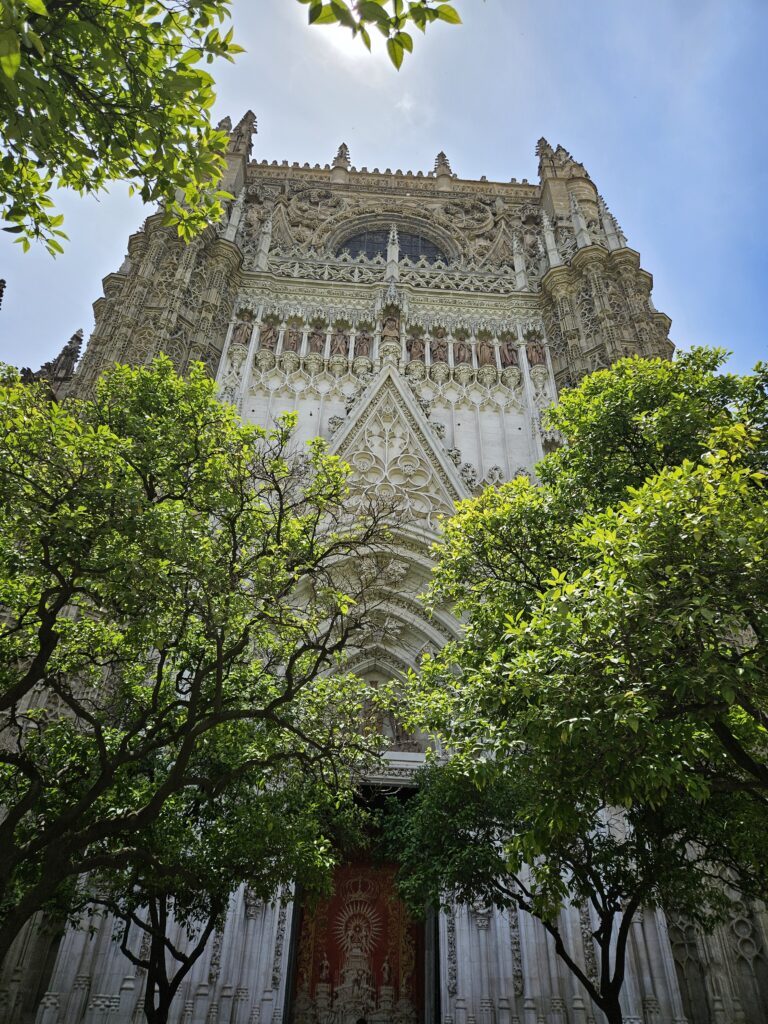
The world’s largest Gothic church, 3rd largest in Europe, with Columbus’ tomb, treasury and a nice courtyard of orange trees. Need to bring your passport/ID card and purchase tickets online ahead of time. The 5 Euro audio Guide for the cathedral is quite good. Main entrance is on west side, Avenida de La Constitucion. The cathedral holds Christopher Columbus’s remains. Tickets include admission to the Church of the Savior as well. Pick up the multimedia audio guide by showing QR codes on tickets at the audio guide desk.
Entradas Catedral de Sevilla (entradasdemuseos.com) for tickets
The High Altar at the Seville Cathedral is the largest and most impressive work of art in the Cathedral. Measuring 20 m high, 23 m wide, it is the largest Gothic altar in the world. Carved out of wood, it also incorporates 3 tons of gold and took nearly 80 years to complete.
In one area of the cathedral, you can see Christopher Columbus’s tomb, held in dramatic fashion by 4 figures representing the four ancient kingdoms of Spain. Columbus traveled a lot not only in life but even after death as his remains moved multiple countries.
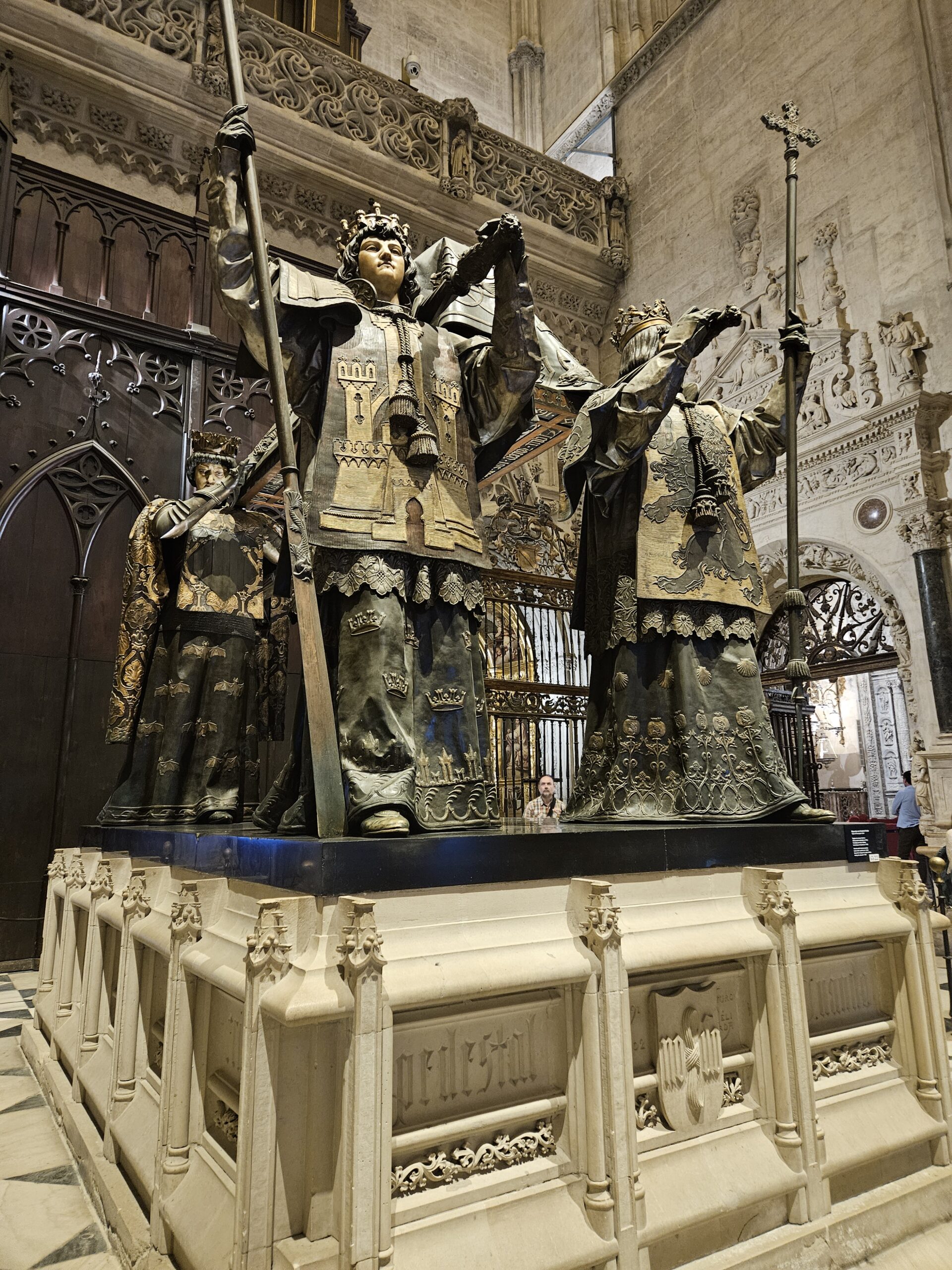
The Giralda tower is a landmark, and some people go up for the views, but this was not a priority for us, so we chose to skip the climb up the Giralda Tower, which is 35 ramps and 17 stairs to the top.
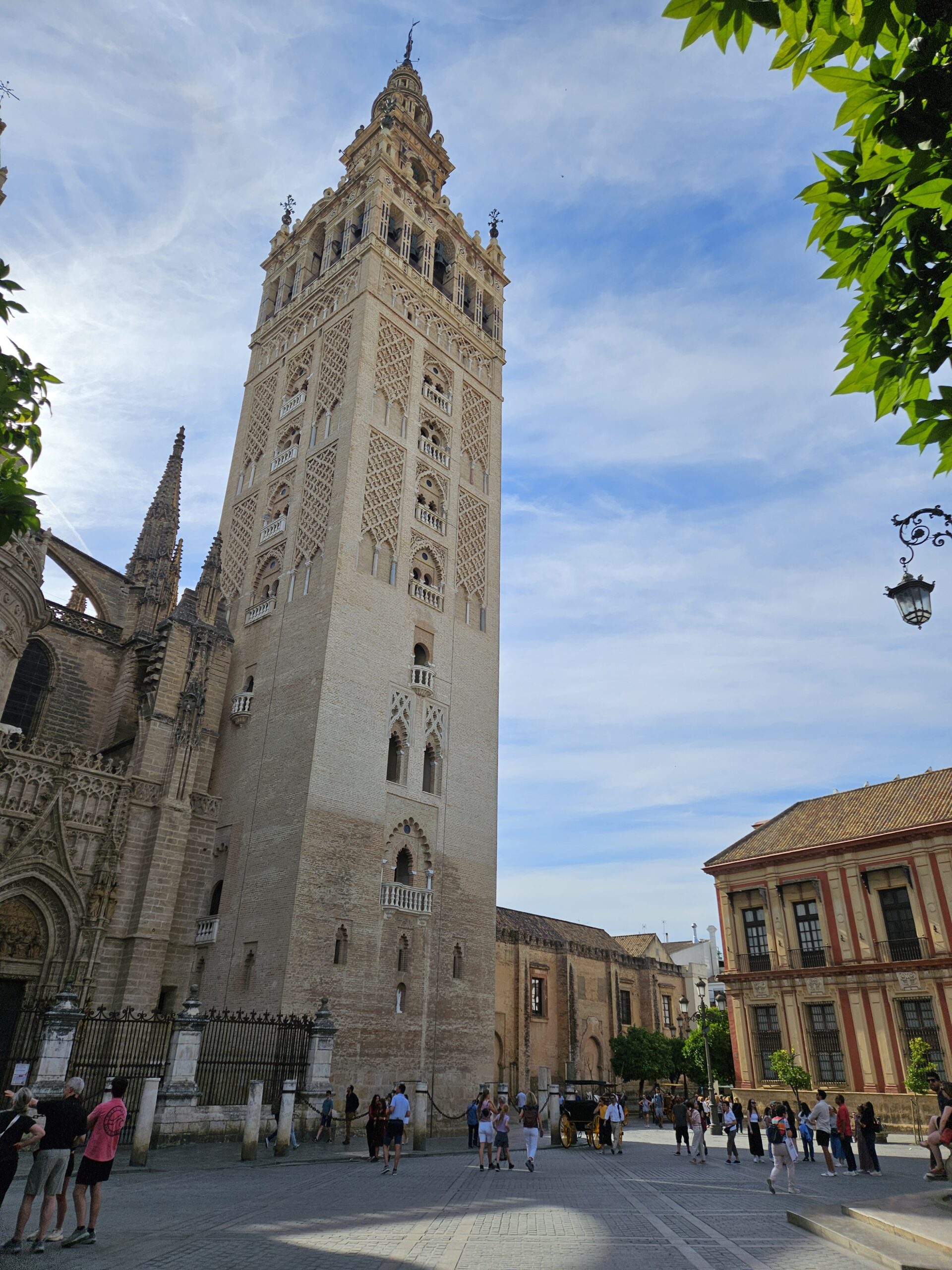
Church of the Savior/Salvador Sevilla’s second-biggest church, bristling with Baroque altarpieces and statues used in the Easter week parades. The cathedral tickets include this admission.
Royal Alcázar of Seville: Sevilla’s beautiful palace, built by the Moors in the 10th century, revamped in the 14th century which still serves as one of the official residences of the Spanish royals. The upper stories of the Alcázar are still occupied by the royal family when they visit Seville. A highlight is the Mudéjar-style palace built by Pedro I during the 1360s. Mudejar is a style that refers to Muslim builders during Christian rule, blending Islamic style with Christiam motifs. The palace also includes Gothic and Renaissance elements.
Tickets can be purchased at Venta de entradas | Patronato Real Alcazar de Sevilla (cliqueo.es)
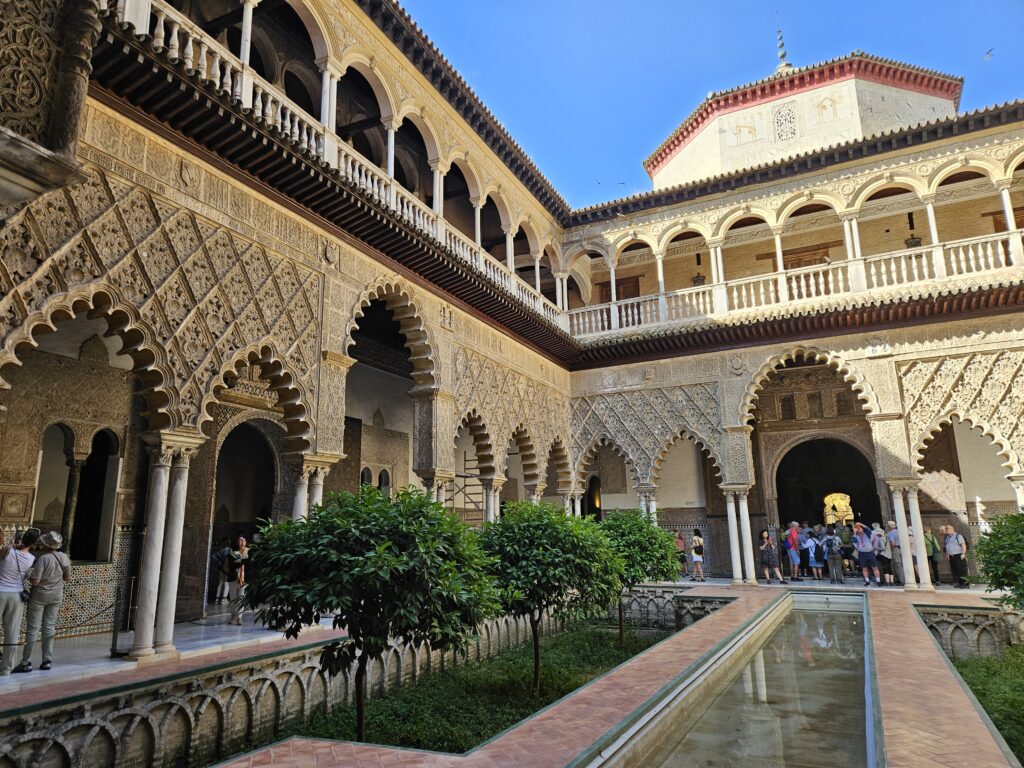
Access through the Lion’s Gate (Plaza del Triunfo). We had 9.30 am tickets and were in line by 9.15 am, remember to keep your id for checks. I had read that the Alcazar has a chaotic queuing system. They create two lines; one is for the current entry time and another for the next time slot. For example, one line would be for 13:00 and one for 13:30, walk all the way to the front to see which is the correct line. The audio guide is not good per reports. Moreover, the numbers displayed in the rooms in places do not match the audio guide and the QR codes don’t work, so we did not purchase it.
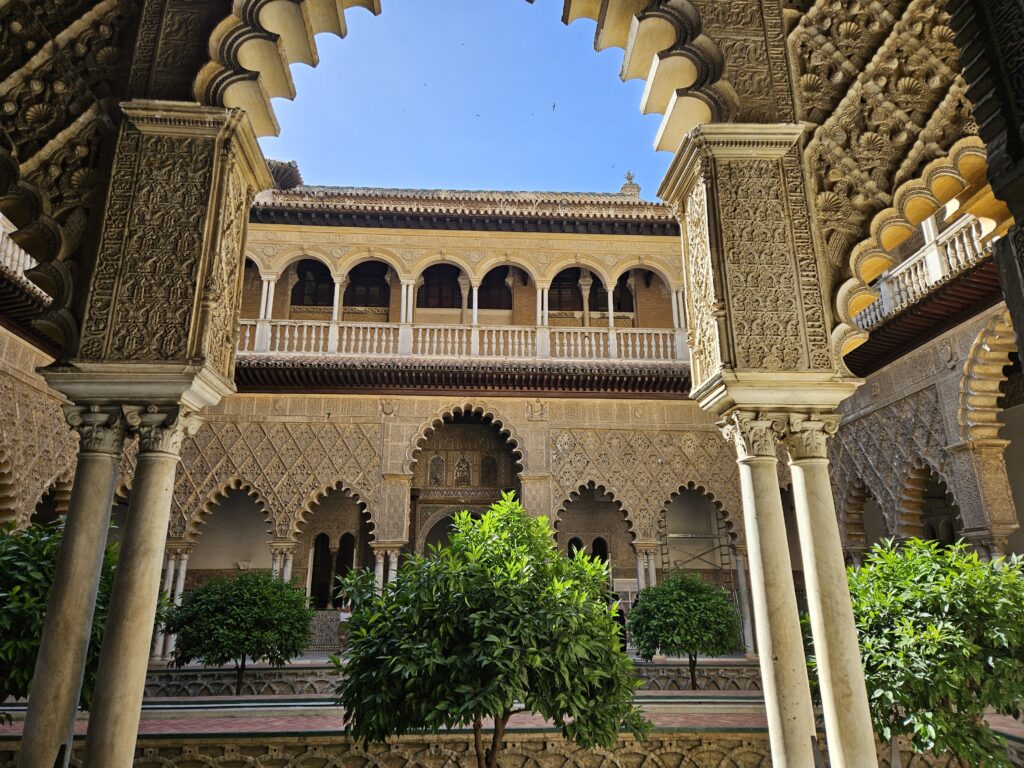
The royal apartments in the Alcazar require a separate ticket (Alcazar + upper royal apartments/real alto 20 Euro combo ticket) and are said to be very interesting. This part is a guided tour, but we were too late, and these were sold out on our dates. If you book it, the time slot is for the apartments so plan your visit carefully, if you miss your time, there is no make-up time. No cameras allowed inside. You will need to go through additional security screening for that tour and leave your belongings in a locker (1 Euro). If you have tickets to see the royal apartments, you are advised to be there an hour earlier to see other areas prior to the apartments.
Plaza de Espana: The most beautiful square we saw in Spain,Seville’s marvelous plaza, legacy of the 1929 World fair. Our walking tour started from here. It is a pleasant place with several beautiful, tiled bench areas, representing all of Spain provinces. Plaza de Espana has been a site for filming in multiple films.
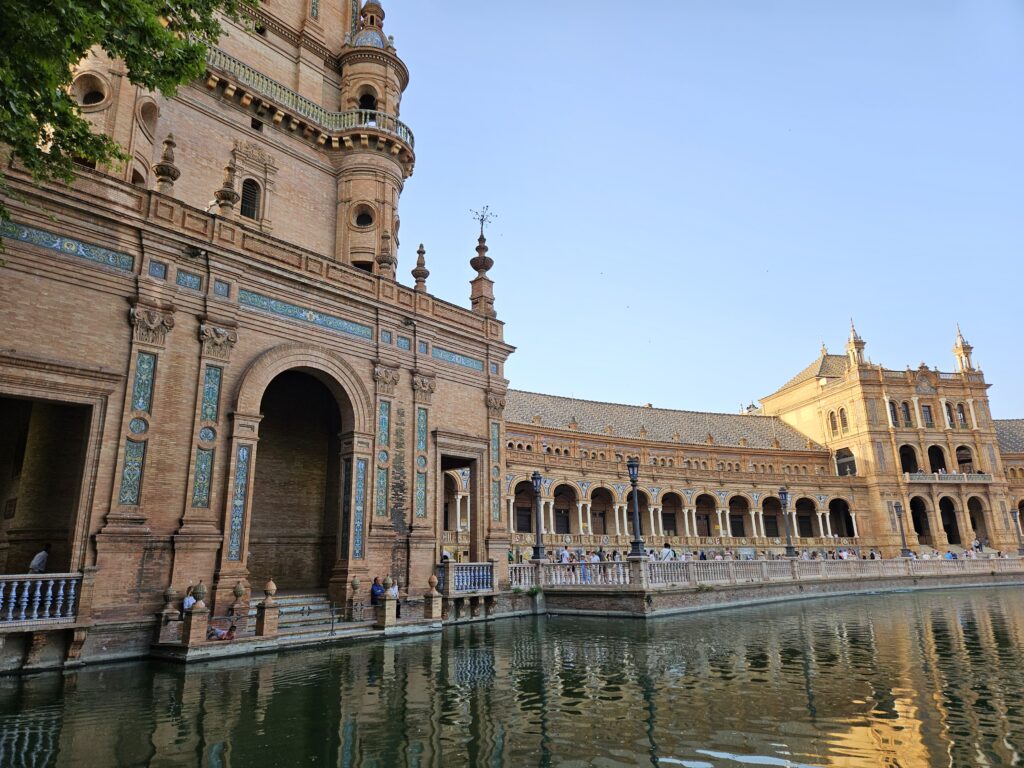
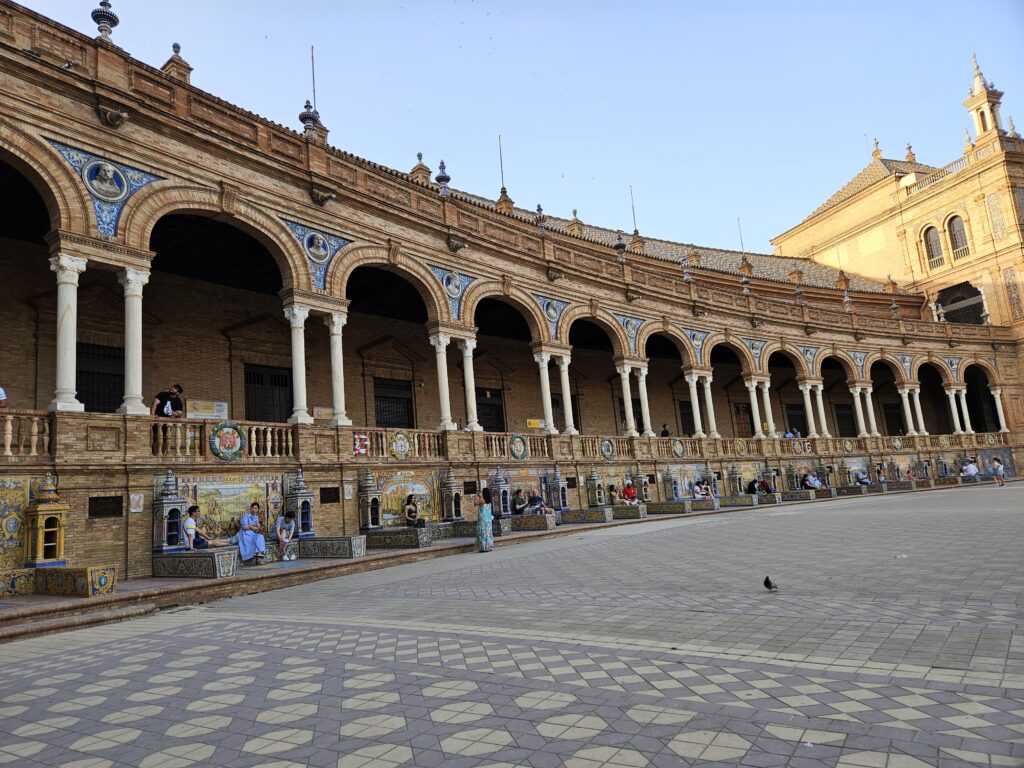
Hospital de la Caridad Former charity hospital (created by Don Miguel Manara, likely the inspiration for Don Juan), with a lovely, decorated chapel.
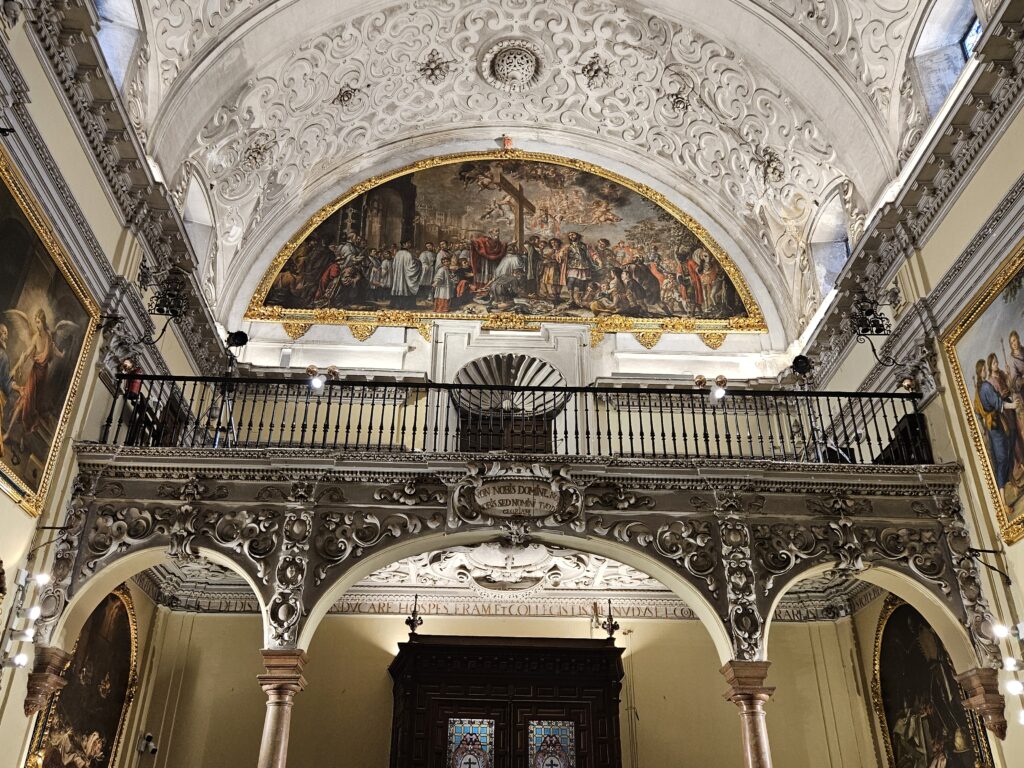
Basílica de la Macarena Church and museum with the much-venerated Weeping Virgin statue and two significant floats from Sevilla’s Holy Week celebrations. Church free, treasury Tesoro 5 Euro fee
Flamenco Flamboyant dance, riveting music-and-dance performances, is a signature part of the Andalusian culture. Flamenco has Oriental, gypsy and Moorish influences. It can be found at various places around town. We chose to attend one at the Flamenco Dance Museum. We found the museum interesting but if you are short on time, can skip the musuem. The show here had 3 dancers and 2 singers, plus a guitar player. The performance was wonderful, again book ahead, we had to purchase the VIP premium tickets with a small audience in an intimate setting at a much higher price as other ticket options were sold out. No cameras allowed. Also check museum hours ahead of time, as it closes earlier in the evening.
Another option is at La Casa del Flamenco, recommendation to arrive 40 mins earlier to get front seats.
Other attractions we did not have time for:
- Museo del Bellas Artes: in a fine building, some very fine art by Spanish painters, Zurbaran and Murillo, pick up English language floor plan
- General Archive of the Indies: a nice building housing the historical documents and correspondence from various Spanish colonies over the years, if you are not a history fan can opt to skip.
- Triana: Energetic, colorful neighborhood on the west bank of the river, which we saw from the opposite end.
- Palacio de las Dueñas: A mansion with lovely gardens
- Museo Palacio de la Condesa de Lebrija: A fascinating 18th-century aristocratic mansion.
Evening Paseo Locals strolling in the cool of the evening, mainly along Avenida de la Constitución, Barrio Santa Cruz, the Calle Sierpes and Tetuán shopping pedestrian zone, and the Guadalquivir River.
Shopping streets in Sevilla: Calle Sierpes, Calle Tetuán, Calle Cuna, Juan Foronda ladies accessories shop, Zara. The retail complex around the modern “Mushroom” and El Cortes Ingles (a Spanish department store similar to Macys); and along Velazquez and/or Sierpes avenues. The stores are open late as they usually close for an afternoon break.
Restaurants:
Sevilla has many restaurants all over, at different price points and tapas are very popular. Few options:-
- Taberna Coloniales at C. Fernández y González, 36, Casco Antiguo, 41001 Sevilla
- Bar Sal Gorda – fusion tapas, Prawn risotto, tuna tartare
- Fatouch: Lebanese: Calle de la Feria 33, 41003 Seville
- Bodegon Alfonso XII: good food & price, Calle Alfonso XII, 33 Local, 41001 Seville Spain
- Bar Estrella Tapas
- Filo: bakery, juice, breakfast option at C. Hernando Colón, 19
- pastry shop Confitera La Campana